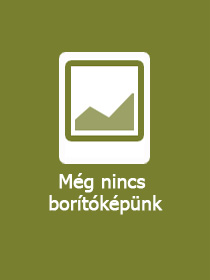
Picturing German Antiquity in the Age of Print
Art, Archaeology, and the Style All?Antica in Early Modern Augsburg
Sorozatcím: Visual and Material Culture, 1300-1700; 60;
- Kiadói listaár GBP 117.00
-
59 213 Ft (56 394 Ft + 5% áfa)
Az ár azért becsült, mert a rendelés pillanatában nem lehet pontosan tudni, hogy a beérkezéskor milyen lesz a forint árfolyama az adott termék eredeti devizájához képest. Ha a forint romlana, kissé többet, ha javulna, kissé kevesebbet kell majd fizetnie.
59 213 Ft

Beszerezhetőség
Becsült beszerzési idő: A Prosperónál jelenleg nincsen raktáron, de a kiadónál igen. Beszerzés kb. 3-5 hét..
A Prosperónál jelenleg nincsen raktáron.
Why don't you give exact delivery time?
A beszerzés időigényét az eddigi tapasztalatokra alapozva adjuk meg. Azért becsült, mert a terméket külföldről hozzuk be, így a kiadó kiszolgálásának pillanatnyi gyorsaságától is függ. A megadottnál gyorsabb és lassabb szállítás is elképzelhető, de mindent megteszünk, hogy Ön a lehető leghamarabb jusson hozzá a termékhez.
A termék adatai:
- Kiadó Amsterdam University Press
- Megjelenés dátuma 2024. december 2.
- ISBN 9789048558896
- Kötéstípus Keménykötés
- Terjedelem286 oldal
- Méret 240x170 mm
- Súly 571 g
- Nyelv angol
- Illusztrációk 94 Illustrations, black & white; 29 Illustrations, color 667
Kategóriák
Hosszú leírás:
Picturing German Antiquity in the Age of Print: Art, Archaeology, and the Style All?antica in Early Modern Augsburg examines the central role of print to local antiquarian pursuits and generation of a style all?antica in early sixteenth-century Augsburg, Germany. Working in the shadow of Holy Roman Emperor Maximilian I, Augsburg?s leading patrons, including humanist Konrad Peutinger and the mercantile Fugger family, documented local antiquities and commissioned new works of classicizing art and architecture, visually asserting a genuine, unbroken lineage to the city?s past.
This study challenges earlier narratives by arguing that Augsburg?s artists and printers did not directly copy Italian Renaissance models but instead manipulated the imported visual vocabulary according to local concerns. The book brings together scholarly discourses on transalpine exchange, scientific advancements in printmaking, and reception of antiquity north of the Alps to offer a new understanding of art in early modern Augsburg and northern Europe at large.
Tartalomjegyzék:
List of Figures
Acknowledgements
Introduction: A ?Renaissance? in Early Modern Augsburg
Part 1: Documenting Evidence
Chapter 1: Local Antiquities and the Romanae Vetustatis Fragmenta
Chapter 2: Ancient Coins, Printed Portraits, and the Idea of Authenticity
Part 2: Borrowing Sources
Chapter 3: Transalpine Exchange, the Welsch, and the Deutsch
Chapter 4: Archaeology of the Printed Page
Part 3: Picturing a Local Past
Chapter 5: Locating Antiquity in the German Landscape
Chapter 6: Architecture All?antica
Conclusion
Bibliography
Index






